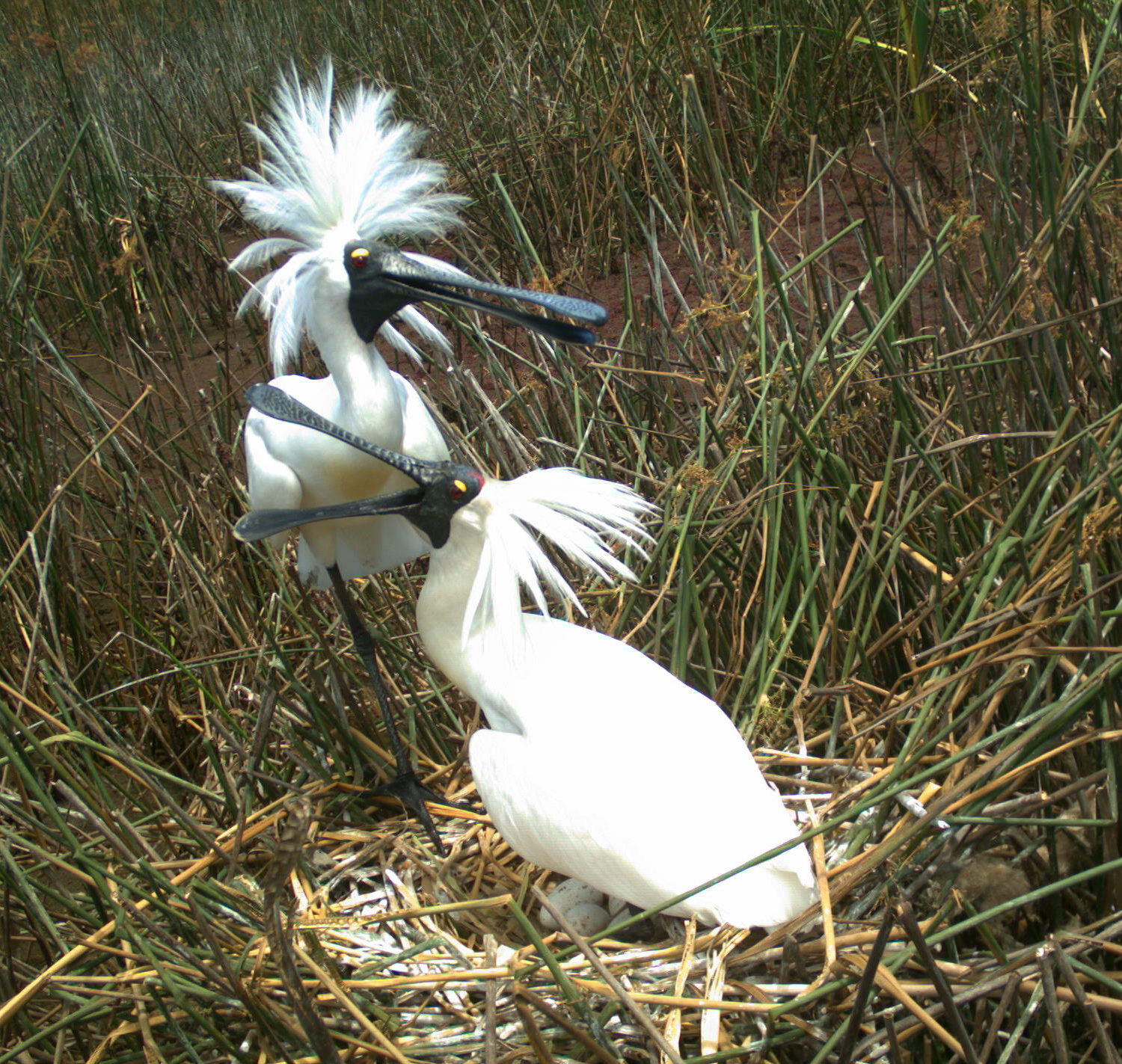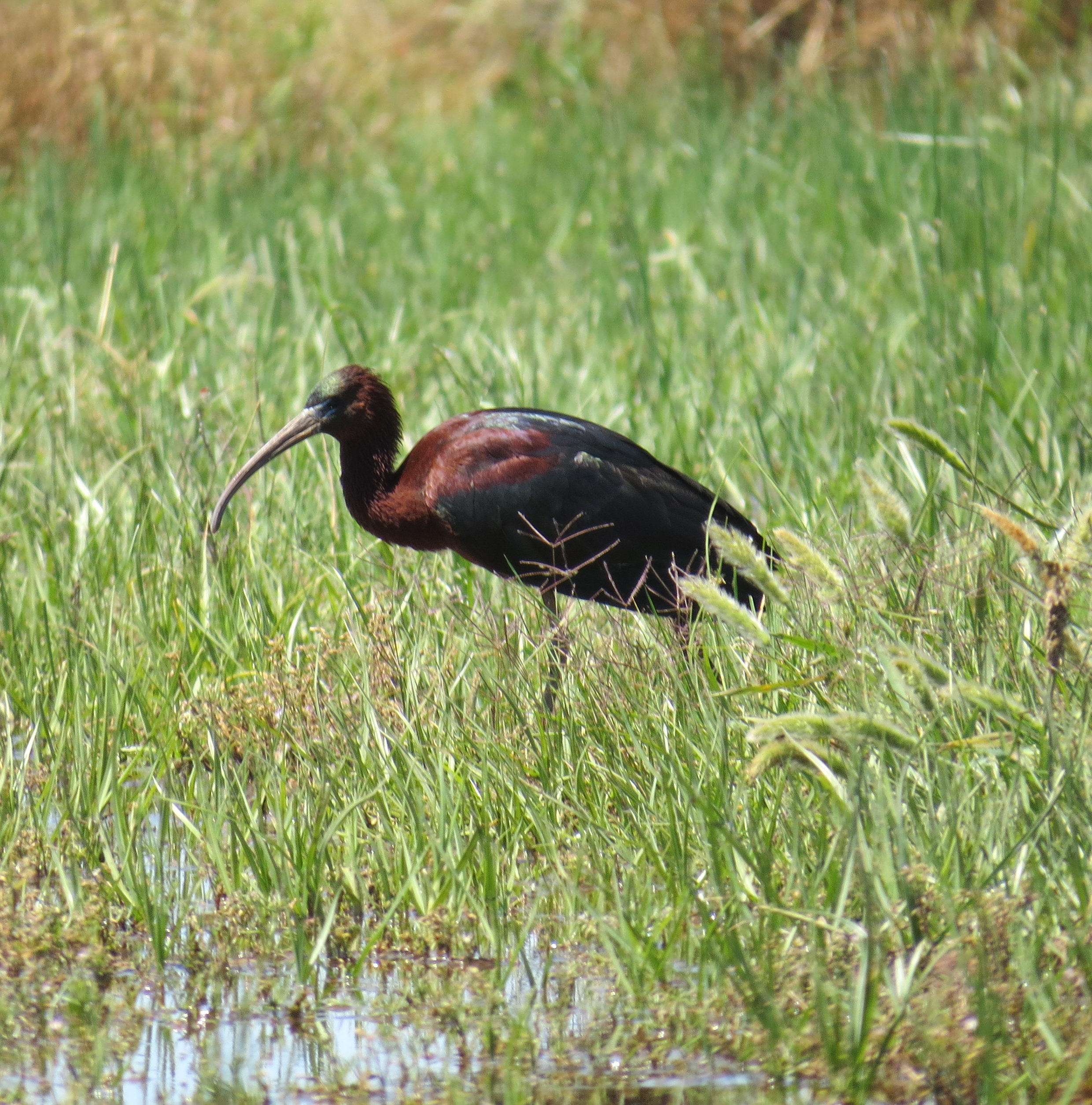How do we choose which birds to track?
Why track the movements of Straw-necked ibis?
Straw-necked ibis (Threskiornis spinicollis) was the first species that our team selected for satellite tracking in 2016, and we have tracked more of this species than any other. Straw-necked ibis were chosen for satellite tracking for a range of reasons:
- Straw-necked ibis are known to nest in large numbers in nearly all Murray-Darling Basin wetlands that receive water for the environment.
- They are dependent on extensive flooded habitats for nesting in good numbers and to successfully raise their chicks.
- They and the other species they nest with are so dependent on flooding that they will abandon their nests if water levels fall too quickly.
- The locations of their major breeding sites are known, as are some of the breeding thresholds related to flows and inundation – but little was known about their movements post-breeding or when selecting breeding sites.
- They are a species of particular interest to water managers because of their need for extended flooding to nest successfully and because their needs are representative of a wide range of other waterbird species.
- Their breeding sites are in locations accessible to researchers.
- They are large enough to carry a GPS satellite tracker. When we started tracking it was very difficult to find small GPS trackers for small species – this is changing!
What about tracking other species?
We are also interested in tracking species that represent dominantly water-foraging aggregate-nesting waterbirds.
This is why we have also been tracking Royal spoonbills (Platalea regia) since 2018. Royal Spoonbills depend on surface water for feeding, meaning their foraging habitat requirements are even more closely tied to water than straw-necked ibis. Royal spoonbills breed in reasonable numbers at most major Murray-Darling Basin waterbird rookeries in most years. They also nest close to the water next to ibis, making them relatively easy to find and access.
The spatulate bill of the royal spoonbill is designed for surface-water feeding on fish, crustaceans and aquatic invertebrates. Image credit: CSIRO.
In 2023 we added satellite tracking of two additional water-foraging species to our program: plumed egret (Ardea plumifera) and eastern great egret (Ardea modesta). Very little is known about the movements of either of these species or their requirements outside the breeding season. Egrets generally nest in trees, but in years with large water flows when nesting sites are crowded they may also nest in shrubs or reeds close to the water.
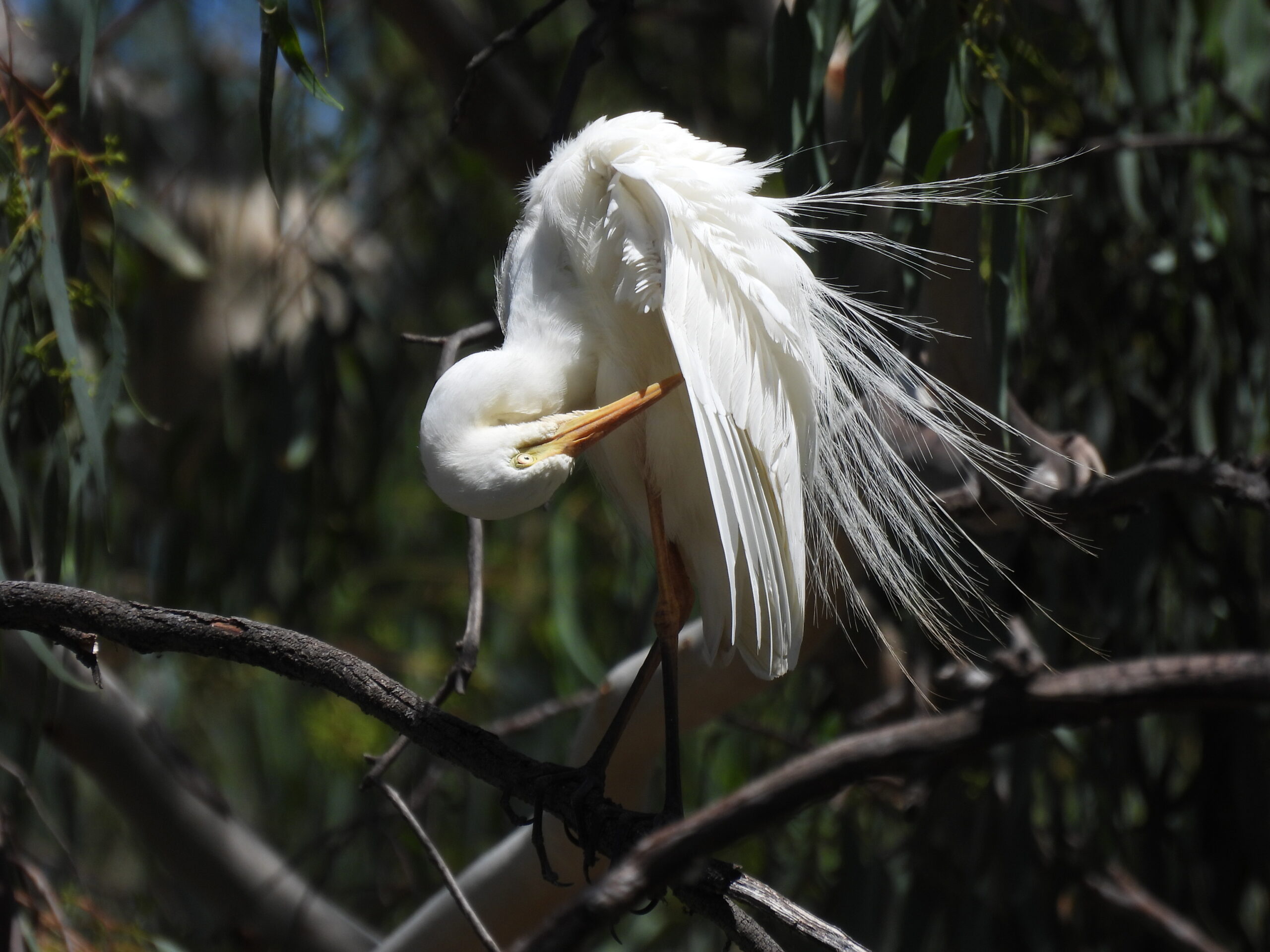
The extremely long legs and necks of plumed and eastern great egrets are distinctive. These birds are extremely dependent on wetlands for feeding all year round. Adults of both species also have frilly white plumes that grow from the breast and shoulders during the breeding season. Image credit: Heather McGinness.
The Australasian bittern (Botaurus poiciloptilus) is a species we have recently started investigating for satellite tracking. Also called the ‘bunyip bird’, this large, secretive bird has a distinctive booming call and is more often heard than seen. Australasian bitterns are endangered and very little is known about their movements,. This knowledge is critical to informing beneficial management.
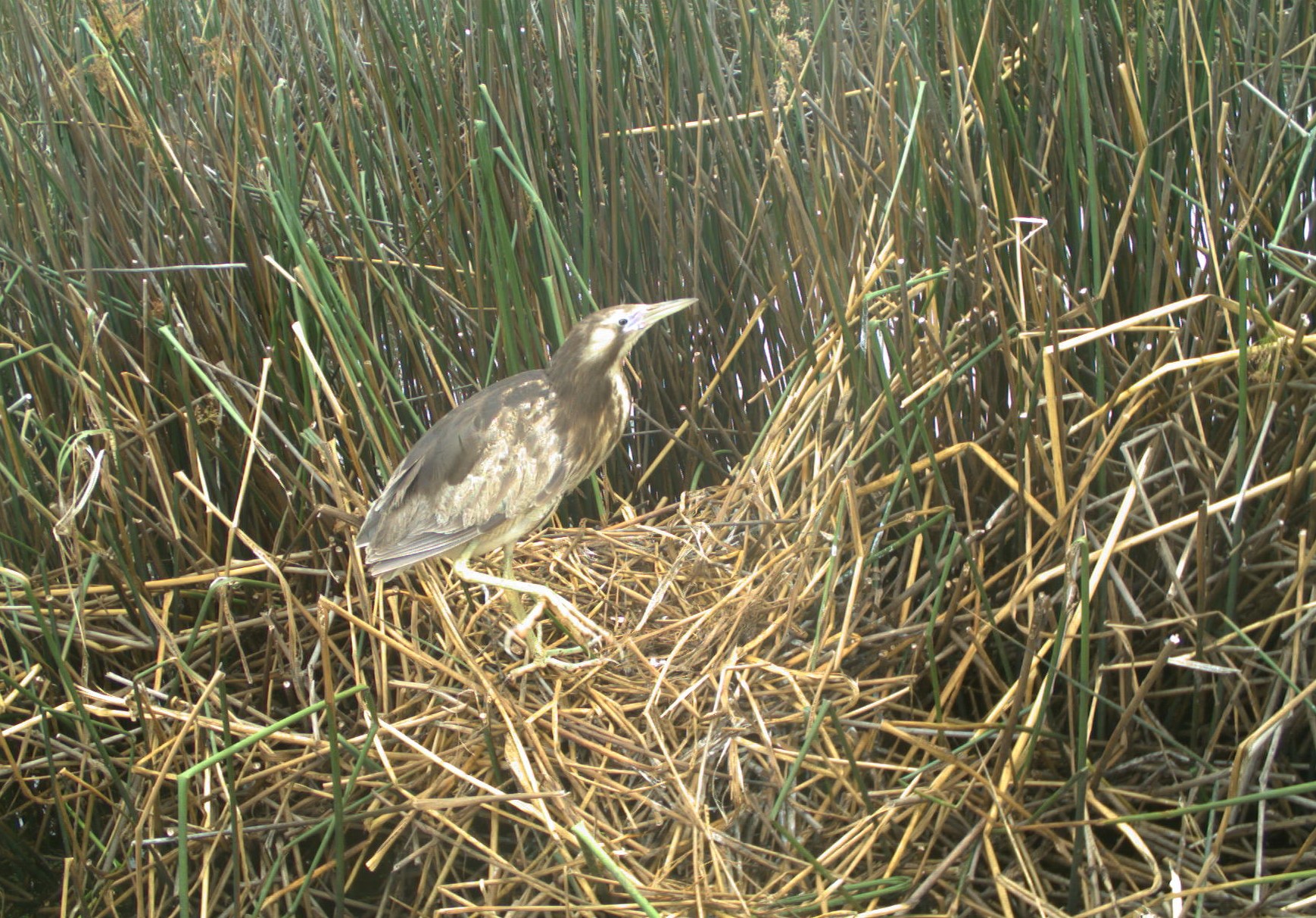
The secretive Australasian bittern favours shallow wetlands with cumbungi/bullrush (Typha sp), Common Reed (Phragmites), rushes (Juncus sp) or lignum (Duma sp) for feeding and nesting. Image credit: CSIRO.
The secretive Australasian bittern favours shallow wetlands with cumbungi/bullrush (Typha sp), Common Reed (Phragmites), rushes (Juncus sp) or lignum (Duma sp) for feeding and nesting. Image credit: CSIRO.
The brolga (Grus rubicunda) is another species we are interested in tracking. Brolgas are currently listed as ‘vulnerable’ in NSW, Victoria and South Australia, so understanding their habitat requirements within the Murray-Darling Basin over the coming years is crucial.
Other species of interest for satellite tracking due to insufficient knowledge of their movements and habitat management requirements include the yellow-billed spoonbill (Platalea flavipes), glossy ibis (Plegadis falcinellus), nankeen night heron (Nycticorax caledonicus), and Australian pelican (Pelecanus conspicillatus).
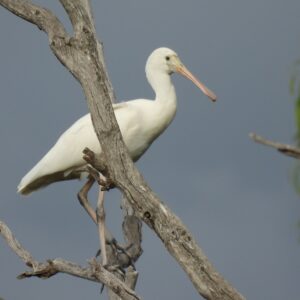
Like its relatives, the yellow-billed spoonbill mostly inhabits wetlands, where it is most often seen wading slowly in shallow waters. This is a juvenile that was photographed at Gayini in NSW in January 2023. Image credit: Heather McGinness.
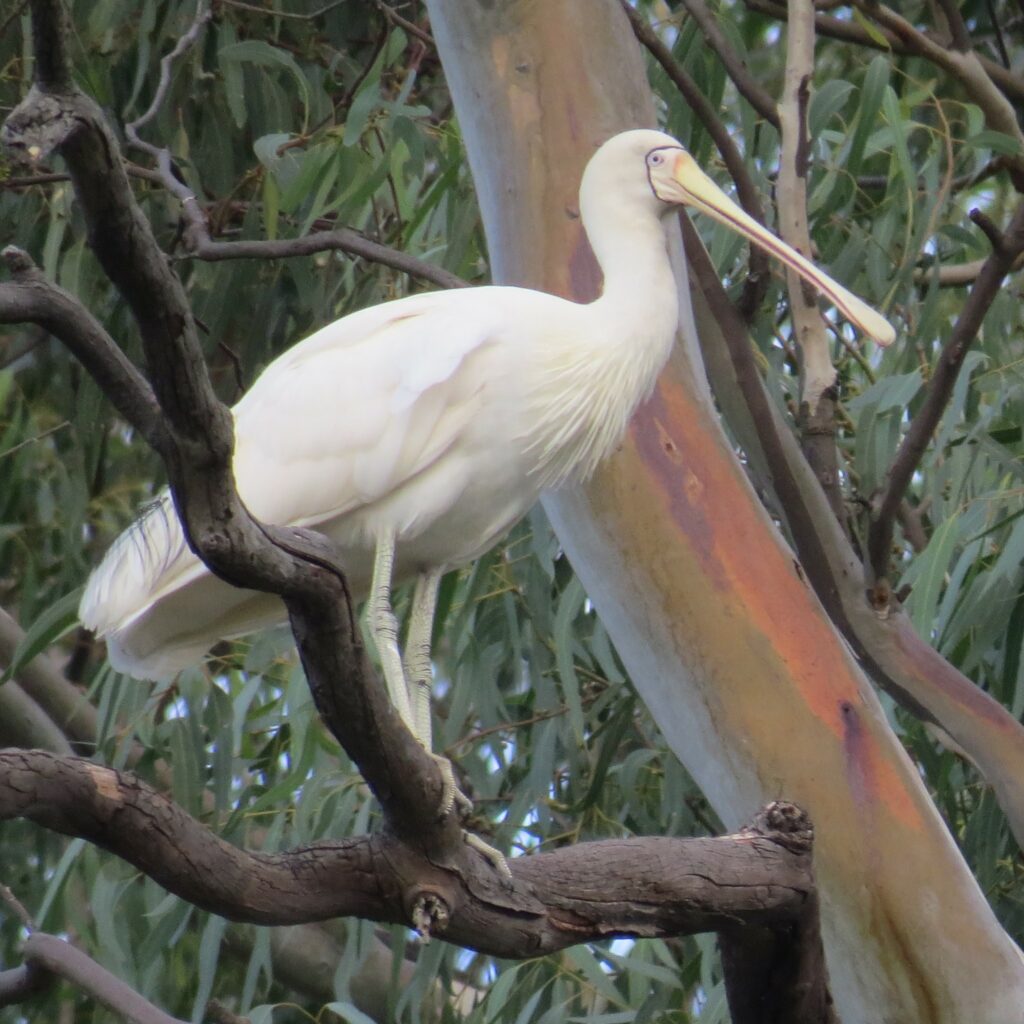
Unlike royal spoonbills which are happy to nest in lignum, rushes, or trees, yellow-billed spoonbills nearly always nest in trees. This adult was photographed at Barma-Millewa in 2018. Image credit: Freya Robinson.
The glossy ibis is an aggregate-nesting waterbird who forages in both terrestrial and aquatic habitats. This individual was photographed foraging at the Macquarie Marshes in October 2016. Image credit: Freya Robinson
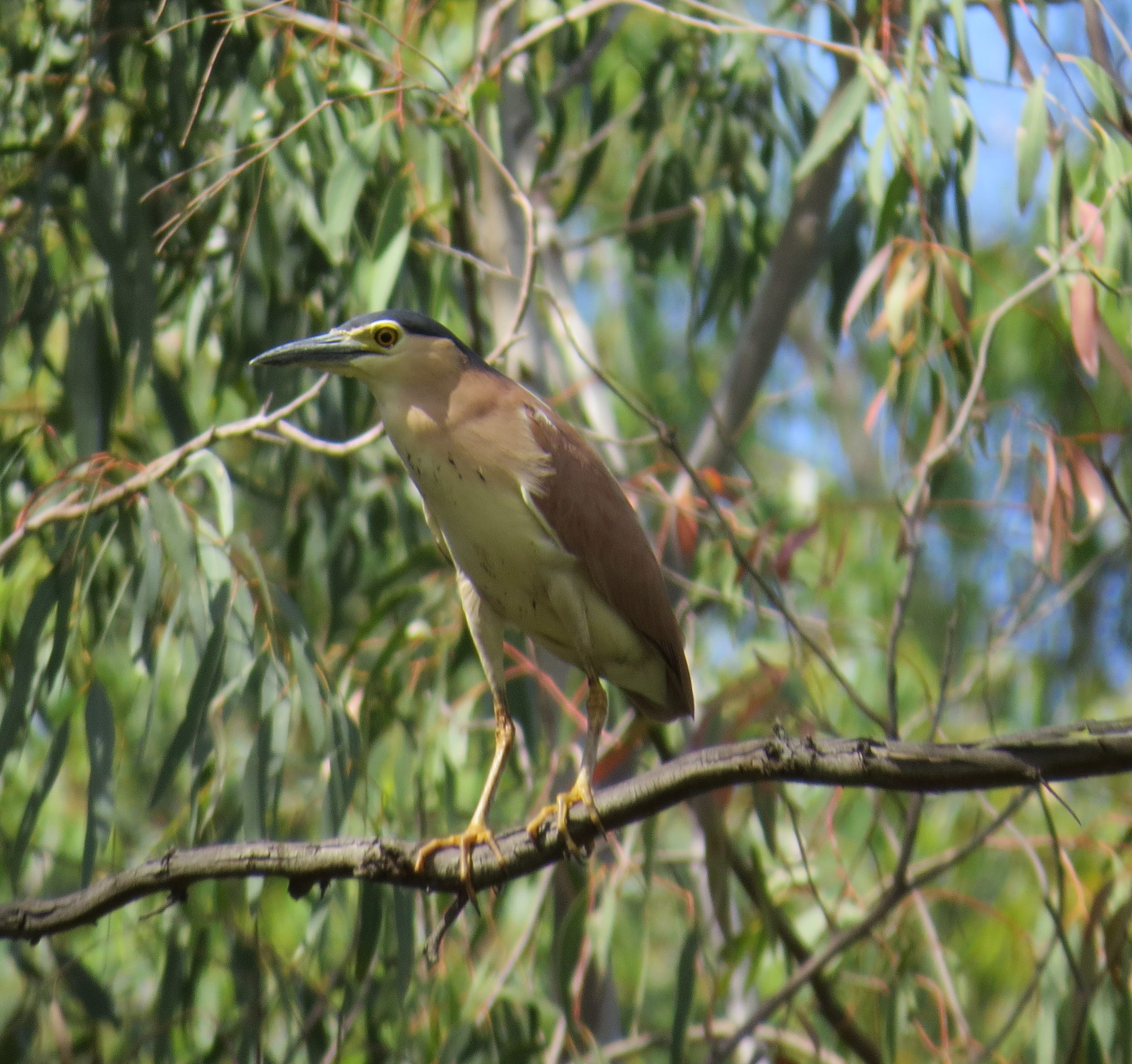
Nankeen night herons nest in tall trees and prefer surface water for feeding. This individual was one of many nesting in tall River Red Gum trees within Barmah-Millewa Forest in November 2015. Image credit: Freya Robinson

